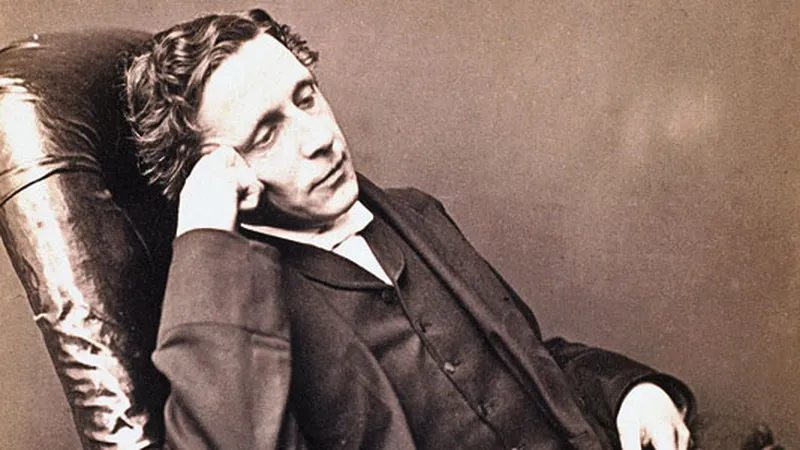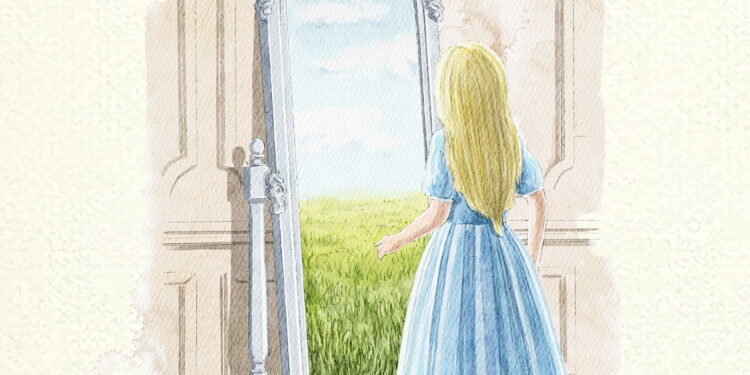Discuss the chess motif as central to the understanding of Through the Looking Glass
Lewis Carroll’s Through the Looking-Glass is a fantasy work of literature that transports readers to Wonderland with whimsical and inventive style. The story is full of strange characters and fantastical happenings, but the chess motif at its core offers a special framework for making sense of it all.
The Chessboard Landscape:
The narrative structure of “Through the Looking-Glass” is evidently centered around the chessboard. When Alice first appears in the story, she has just returned from her journey through the Looking-Glass universe and is standing in what looks like a huge chessboard. The chessboard squares, where each square represents a different Wonderland location, are the setting for Alice’s adventures. The chessboard serves as a symbolic arena where characters maneuver strategically to mimic the dynamics and regulations of the game of chess.
Symbolism of Chess Pieces:
One of the most captivating aspects of the chess motif in “Through the Looking-Glass” is the symbolism attached to the chess pieces. As Alice progresses through the chessboard, she encounters characters that represent specific chess pieces, each with its unique movements and significance. For instance, the White Queen and the Red Queen embody the queen chess piece, and Tweedledum and Tweedledee symbolize the twin pawns. Carroll masterfully integrates the characteristics of chess pieces into the personalities and behaviors of the Wonderland inhabitants, adding depth and complexity to the narrative.

Strategic Movements and Literary Devices:
Carroll ingeniously employs the strategic movements of chess pieces to structure the plot and create a sense of order within the fantastical world of Wonderland. The novel unfolds in a series of moves and countermoves, with characters progressing through the chessboard in a manner akin to the rules of chess. The use of this structure allows Carroll to introduce a sense of logic and coherence to an otherwise chaotic and unpredictable narrative. The interplay between the characters reflects the tension and dynamics inherent in a game of chess, engaging readers in a unique and intellectually stimulating literary experience.
Chess as a Metaphor for Life:
Beyond its structural significance, the chess motif in “Through the Looking-Glass” serves as a metaphor for life’s journey and the challenges one must navigate. In chess, each piece has a distinct role and set of movements, mirroring the diversity of experiences and choices individuals encounter in their lives.
Also Read-
- What are the special features of The Scarlet Letter as a fictional work
- Does Hawthorne accept the moral ideas of Puritans, especially regarding adultery
- How did Henrik Ibsen contribute to the growth of modern American drama
The progression of Alice through the chessboard can be interpreted as a metaphorical representation of personal growth and self-discovery. The challenges and encounters she faces parallel the obstacles and opportunities that individuals encounter on their life paths.
The White and Red Armies:
The two opposing armies in the chess game, the White and Red armies, introduce an element of conflict and rivalry to the narrative. This duality is reflected in the contrasting characters and environments that Alice encounters on her journey. The chessboard becomes a battleground where opposing forces vie for supremacy, and each square represents a strategic point in the ongoing conflict. This dynamic interplay between the White and Red armies adds a layer of tension and excitement to the story, reinforcing the chess motif as a central organizing principle.
Reflections of Reality in Wonderland:
Carroll skillfully blurs the boundaries between the fantastical Wonderland and the real world by using the Looking-Glass as a portal. The Looking-Glass itself becomes a metaphorical chessboard, suggesting that the game of chess is not confined to the fictional realm but has implications for the real world as well. This interplay between reality and fantasy underscores the enduring relevance of the chess motif, inviting readers to consider the ways in which strategic thinking and decision-making extend beyond the confines of a game board.
Conclusion
The chess motif in Lewis Carroll’s “Through the Looking-Glass” serves as a multi-dimensional literary device that enriches the narrative on various levels. From the structural organization of the story to the symbolism attached to chess pieces, Carroll employs the intricacies of the game to create a whimsical yet thought-provoking Wonderland.
The strategic movements of characters, the representation of opposing armies, and the metaphorical implications for life’s journey all contribute to the novel’s depth and enduring appeal. The chessboard becomes a metaphorical canvas upon which Carroll paints a fantastical exploration of human experience, challenging readers to navigate the intricate moves and counter-moves of life.
FAQ:
1. How does the chess motif enhance the narrative structure of “Through the Looking-Glass”?
The chess motif provides a logical and structured framework for the narrative, with characters moving through the Looking-Glass world in a manner reminiscent of chess pieces on a board. This organization adds a layer of order to Wonderland’s chaotic nature, allowing readers to follow Alice’s journey through the interconnected squares of the chessboard.
2. What is the significance of the symbolism attached to chess pieces in the novel?
Each character in “Through the Looking-Glass” represents a specific chess piece, with the White and Red Queens embodying the queen chess piece, Tweedledum and Tweedledee symbolizing pawns, and so on. This symbolism deepens the characters’ complexity and contributes to the overall metaphorical richness of the novel, connecting the fantastical world of Wonderland to the strategic dynamics of the game of chess.
3. How does the chess motif serve as a metaphor for life’s journey in the novel?
The progression of Alice through the chessboard mirrors the challenges and opportunities individuals encounter in their own life journeys. The diversity of experiences, choices, and encounters reflects the complexity of life, inviting readers to consider the broader implications of strategic thinking and decision-making.
4. What role does the conflict between the White and Red armies play in the narrative?
The conflict between the White and Red armies introduces a layer of tension and rivalry to the story. Each square on the chessboard becomes a strategic point in an ongoing battle, enhancing the narrative’s excitement and contributing to the overall metaphorical significance of the chess motif.
5. How does the novel blur the boundaries between reality and fantasy through the Looking-Glass?
The Looking-Glass serves as a portal between the real world and Wonderland, suggesting that the game of chess and its metaphorical implications extend beyond the confines of fiction. This interplay between reality and fantasy underscores the enduring relevance of the chess motif and invites readers to contemplate the ways in which strategic thinking applies to both realms.














